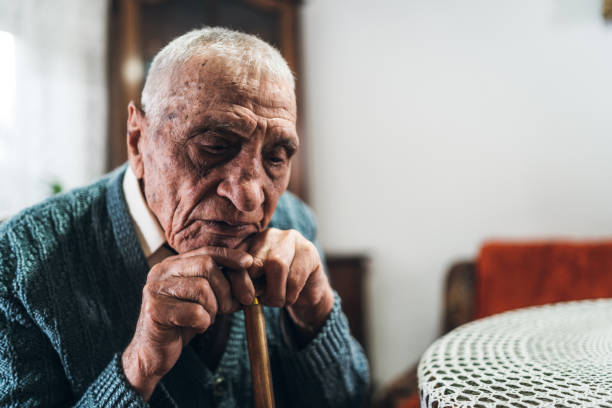Retirement villages are booming, while aged care homes face a staffing crisis over nurses’ pay, forcing the closure of more than 400 beds
{Credit: Stuff 24/04/22}
A wave of baby boomer pensioners, combined with the global pandemic, is firing up the retirement industry.
Every week about 40 new villas and apartments are completed, and every week 100 seniors move into retirement villages to enjoy the secure carefree lifestyle pictured in glossy advertising brochures.
Over the next five years, 87 new villages and 21,400 units are planned, but behind this seemingly rosy outlook lie some rather less palatable facts about the aged care sector.
Over the past six months 461 rest home beds have closed, largely due to the shortage of 1000 registered nurses lured by the promise of earning up to $30,0000 a year more in public hospitals, and operators warn more closures are pending unless the Government addresses pay parity and work force issues.
Care crisis
So fierce is the competition for the diminishing pool of skilled staff in aged care facilities, that some nurses are being offered sign-on bonuses of $5000 to $10,000.
Annual turnover of nurses reached 50 per cent last year and the home-based care sector, which looks after about 75,000 New Zealanders aged 65-plus living in their own homes, is also struggling with about 2400 vacancies out of a total caregiver work force of 17,000.
New Zealand Health Group, our largest provider of home support services has had to suspend referrals in Auckland, turning away 20 to 30 a day, due to the lack of registered nurses needed to supervise carers.
Managing director Josephine Gagan says the vaxine mandate took out more than 400 caregivers, and they have lost about 20 per cent of nursing staff to district health boards (DHB) over the past six months because of the pay gap.
Added to that, the pay equity agreement resulting from the landmark case taken by care worker Kristine Barlett is due to lapse in July, and like union E tū, Gagan is keen to see the current legislation extended to help retain experienced workers.
She says the $34 to 441 per hour the Government pays for home care is nowhere near enough, and last year she gave notice to six DHBs whose rates were so low the company was losing money, ($200,000 a year in the case of South Canterbury DHB).
All eventually upped their rates when Gagan threatened to pull out, and she is pinning her hopes on the health reforms shifting more funds into the community so elderly lacking appropriate support do not end up in rest home or hospital care unnecessarily.
“That’s the only solution to what is fundamentally a crisis in the sector.”
More bed closures looming
Wairoa has felt the sharp edge of the staffing shortage, with some families now facing a round trip of up to three hours to visit elderly relatives shifted to other centres in March when lack of registered nurses forced the closure of Glengarry Lifecare’s 15 hospital level beds.
The rest home, where many family members dropped in on a daily basis, is owned by Heritage Lifecare which has 41 aged care facilities spread from Whangarei to Invercargill, and chief executive Norah Barlow is fairly steaming about the staffing situation.
Once the pay equity deal is passed, she says senior nurses in public hospitals will earn $33,000 more than their colleagues in aged care, and many are also looking across the Tasman.
“We have nurses leaving us to go to Australia where they are paid $30 an hour more than what we are paying them. Wouldn’t you go?”
According to the Ministry of Health, 18 rest homes with just under 500 beds have shut down over the past two years.
On top of that there are those like Wairoa that can’t take residents requiring 24/7 hospital level care, and Barlow says the risk is those patients will become “bed blockers” in public hospitals because there is nowhere else for them to go.
Heritage Lifecare is very unlikely to build another standalone rest home, and Barlow says that means poorer parts of New Zealand will be less well served with care beds.
“The regions are growing faster than you think, and they will reach a crisis tipping point sooner if nothing is being built and people are still ageing.”
New Zealand Aged Care Association chief executive Simon Wallace says last year’s survey of 432 residential facilities offering rest home, hospital and dementia care shows they are getting bigger to achieve economies of scale, with an average of 60 beds.
About half are now located in retirement villages, mostly built by the “big six” commercial operators – Bupa, Oceania, Metlifecare, Summerset, Arvida, and Ryman Healthcare – which can use capital from the sale of residential units to cross subsidise rest home developments.
At a time when demand is rising, Wallace predicts we will see more closures of older smaller private and charitable facilities, especially in rural areas.
“We also have a lot of rundown stock, we’re talking about some that have gone 30 years without renovations because the funding model does not incentivise renovations, upgrades or new developments.”
Bed subsidy rates are based on local authority land costs that have not kept pace with rising land values, and Wallace says aged care providers get an average of $250 a day in government funding for a hospital level bed to cover , compared with $1000 a day for a public hospital bed in Counties Manukau DHB.
“The Government was paying more for an MIQ bed than they were for a hospital bed in aged resident care.”
For that reason it has become increasingly common for aged care facilities to charge “accommodation supplements” for bigger premium rooms with ensuite bathrooms and better views.
In the last industry survey, 66 per cent of rooms attracted premiums and the median charge of $59 a day for a larger room with an ensuite had more than doubled since 2019, and Wallace says that makes rest home operations “extremely tenuous” in low income areas where people simply cannot afford to pay extra.
More aged care providers are also using occupational rights agreements, similar to those charged for retirement village units, to get an injection of capital and the lump sum payments are now charged on about 12 per cent of all beds.
Ryman Healthcare also offer refundable accommodation deposits where clients going into care pay about $350,000 up front for a room instead of paying weekly fees, but they get the full deposit back when they leave, unlike an occupational rights agreement where a management fee of up to 30 per cent may be deducted.
Ryman says demand for refundable accommodation deposits is growing and, in the six months to September 2021, the company received $33m worth of deposits, up from $12m in the previous six months.
Covid-19 has also brought added costs, and since the pandemic began Ryman estimates it has spent $50m on rapid antigen tests, PPE and additional services and security.
Omicron has seen as many as 40 per cent of staff stood down in some care homes, and even if physical care has been maintained, the pressure is showing in other ways.
The daughter of a Christchurch rest home resident was appalled to discover dinner time had been brought forward to 4.30pm, and she found her elderly mother who has dementia left in bed sobbing at 6.30pm with the lights out.
“There’s so many people to look after and only a handful of staff.”
Pandemic’s silver lining
The isolation felt by many seniors during Covid-19 lockdowns helped push up demand for retirement villages which house about 14 per cent of New Zealanders aged 75 and over.
But changes are in the wind, with a review of the Retirement Villages Act due this year following a report from the Retirement Commissioner that concluded changes to the regulations were needed to eliminate unfair terms in contracts and better protect the rights of residents.
Consumer NZ last year asked the Commerce Commission to investigate retirement village marketing claims which created the misleading impression that care in their rest home facilities was guaranteed for village residents.
Retirement Villages Association executive director John Collyns says that more than 87 per cent of residents who needed to move into care could do so in their “home village”, and the complaint had been dismissed.
But the commission says that is not the case, and it would form part of a wider look atpotential Fair Trading Act issues affecting vulnerable consumers.
Consumer NZ chief executive Jon Duffy says 13 per cent of residents missing out on the next level of care was still a significant number when continuity of care was used as a major selling point by villages, and he says it is unacceptable that residents have fewer rights than tenants when it comes to things like responsibility for repairs to appliances.
More fundamental changes may also be on the way to take into account falling home ownership rates.
Researcher Kay Saville-Smith from the Centre for Research Evaluation and Social Assessment suggests that by 2053 almost half of over-65s (640,000 people) will be renting, including 326,000 aged 85-plus.
She says buying into a retirement village won’t be possible for long term renters lacking capital from the sale of a family home, and we need to be planning now on how to properly house and care for them.
At present occupational rights agreements cost between two thirds to three quarters of the price of a freehold property in the area, with management fees averaging $148 a week.
Last October CBRE put the average occupational rights agreement price nationally at $673,000, and those currently advertised on TradeMe range from $305,000 for a one bedroom unit in Invercargill, to a $2m luxury 3-bedroom in Auckland’s Devonport.
Out of more than 36,345 retirement village units nationally, just 660 are rentals, but Collyns says last year’s ANZ survey of villages found 20 per cent were investigating rental options, with much greater interest from not-for-profits.
About a third expected the sector to introduce rentals over the next five years, but almost 60 per cent said they would wait to see evidence it worked before going down that track.
Some charities uncomfortable about focusing on the “haves” rather than the “have-nots” are acting accordingly.
Last month the Selwyn Foundation completed the sale of half of its 12 retirement villages to Metlifecare, saying it wanted to free up more capital to spend on affordable housing and social support for vulnerable elderly.
Saville-Smith would like local authorities to make it easier for older folk to build an “accessory dwelling unit”, often referred to as a granny flat, on their properties, so they can live in it and rent the big house out to someone else, or subdivide.
She says kaumātua housing has been very successful, but there is less traditional council-owned pensioner housing because local authorities have switched their focus to get rental subsidies for people on the housing register, and seniors often do not qualify.
That is also an issue for Abbeyfield New Zealand which has 14 shared houses where about a dozen residents live together in something akin to a flatting set up with a housekeeper and cook, paying $396 a week to cover all their basic living costs.
Officer Susan Jenkins says just under half their residents live out the remainder of their lives in Abbeyfield, thriving on the companionship, good meals, and without the worry of looking after a stand-alone property.
There are plans for a further six houses, most of them in smaller towns such as Blenheim and Greymouth, but the purpose-built properties cost about $3m, and financing them is challenging.
Government funding is really only available for high-needs people on the public housing register, and few of Abbeyfield residents are in that category, says Jenkins.
“They have some savings, but they don’t have enough to buy into and maintain the cost of being in a retirement village. They are what we refer to as the ‘missing middle’, they fall between two stools, and I think there’s quite significant numbers of them.”
A significant downside of retirement villages is that, other than in a very small minority of cases, capital gain goes to the operator when vacated units are resold, and as property values have skyrocketed, the industry has come under some pressure to share those profits.
Fletcher Living has responded to that with plans to build 1000 villas over the next decade where buyers will get half the capital gain of the resale price, less the cost of refurbishment.
The first units, as yet unpriced, are due to hit the Auckland market mid-year, and will have in-home health care delivered by a private provider paid for separately.
Forsyth Barr aged care analyst Aaron Ibbotson says capital gain on turnover of village units is an important source of income, and he estimates that the four biggest players have seen profitability halve for the care side of their operations in the last two years.
“Resale gains are a crucial part of how they make money there is no doubt about that.”
Collyns says that sharing capital gains is “deeply unlikely” and he argues that profits from occupational rights agreements sales cross subsidise the building of rest homes, and residents’ weekly fees, which are fixed in about 60 per cent of villages.
For the full Stuff story, click here





















